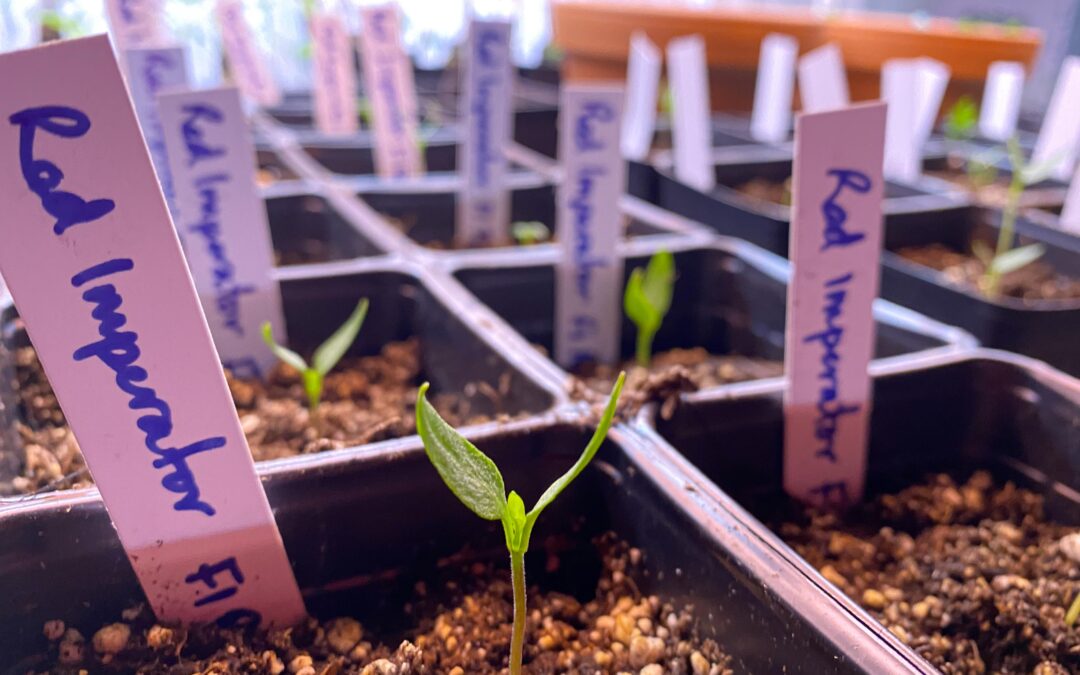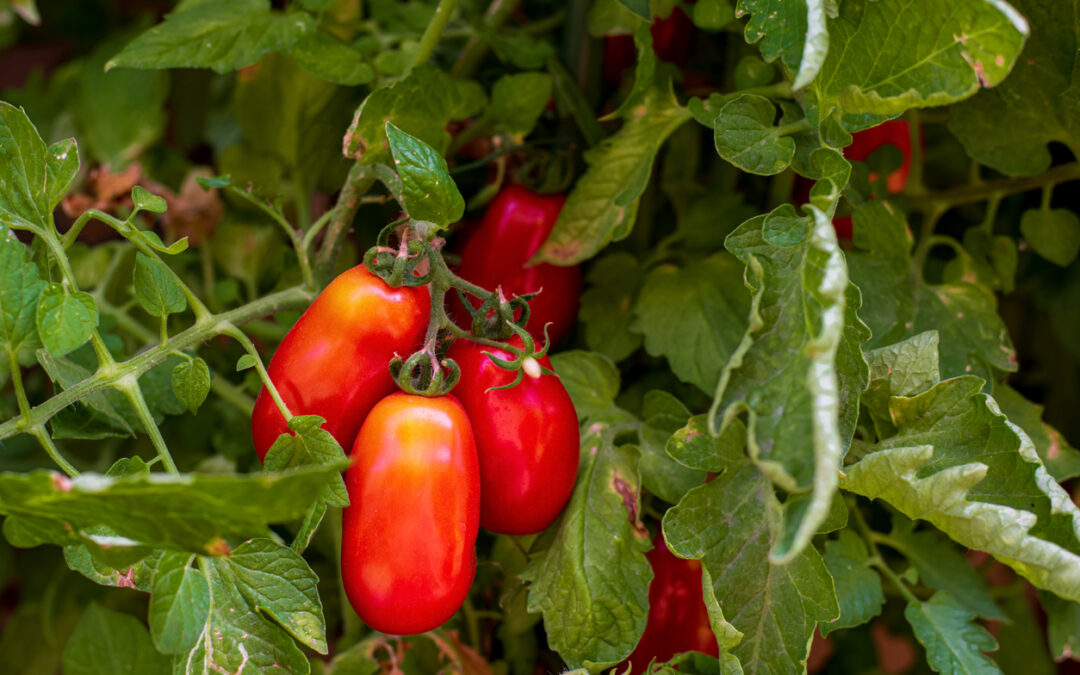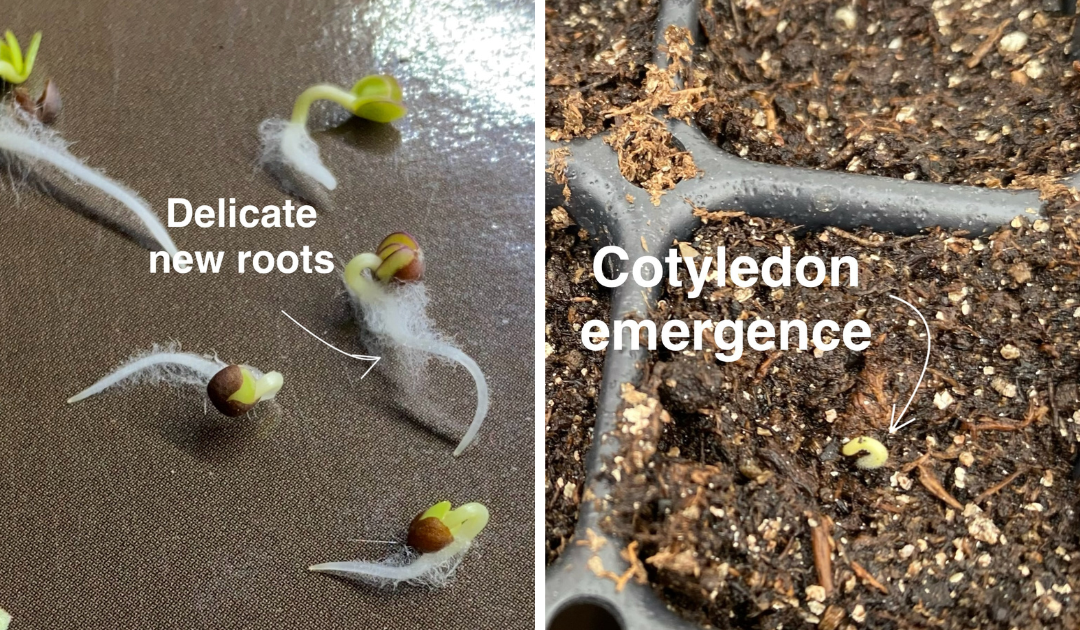
Common advice is to start your seeds several weeks before “last frost.”
Even experienced gardeners are left head-scratching over exactly what that means.
Here are some easy steps to help guide your indoor seeding plans.
You’ll Need:
- A year-at-a-glance calendar
- Internet access
- The seeds you want to start with
- Your postal code
- A pen
STEP 1: Check the Old Farmer’s Almanac website to find the last frost date for your postal code. This information is based on about 40 years of weather data which, while not perfect, is still helpful.
STEP 2: Circle your Last Frost Date on the calendar.
STEP 3: One by one, read the back of your seed packets and use the Last Frost Date to count backwards according to your particular plant.
STEP 4: Write the recommended seeding date on your seed packet.
For almost all plants that have to be started indoors, seeding between mid-March and early-April is plenty early. Key exceptions are strawberries (start in January) and many onions or leeks (start in February).
STEP 5: Spend the time between now and then perfecting your indoor seed starting setup and relaxing. Get seed starting mix—yes, it is different from regular potting mix and, yes, it matters—the right number of pots for how many plants you will grow, a heating pad, a bottle of distilled water, a humidity and temperature gauge, a small fan, a dedicated shelf, and a grow light. Trust me, you should not compromise on the grow light. It makes all the difference.
View this post on Instagram
About Seed Packets
Seed packets that advise you to start “several weeks before the air is usually around 15 degrees” are not helpful. Not at all. When is that? What is “several”? How can I predict what the weather is going to be? Instead, look for seed packets that give specific information like “start indoors 4-6 weeks before last frost” and an estimate on how many days the seeds typically need to germinate. Clear knowledge will make you a better gardener.



